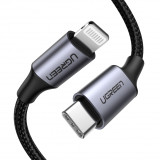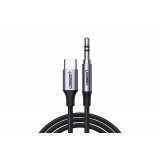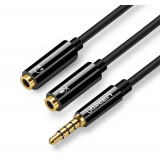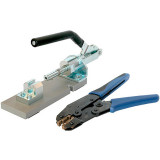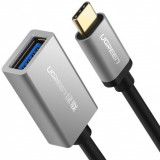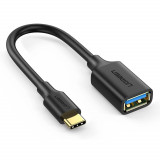Cables
Despite the fact that all cables look similar to each other, there is still a difference between them and a very big one. Cable influence on the sound depends on many factors: cable length, material and purity of conductors, conductor cross-section, dielectric material, shielding, connector material, cable connection direction, production technology and design.
Less cable length – the better the sound. The resistance of the cable has a great influence on the sound, especially in the bass parts. The most vulnerable cable in which resistance has the greatest effect on sound is the speaker cable. The resistance shows how much the cable prevents the passage of electrical current through it, in our case the audio signal. Sometimes it is impossible to put the equipment as close to each other as possible, especially acoustics, then we have to look for a compromise, which cables to make longer. There are only two options: long acoustic and short interconnects or vice versa – short acoustic and long interconnects.
The material of the cable conductors is also important for the sound. Some manufacturers use alloys of silver, gold, palladium and platinum in various combinations to improve signal transmission. Silver is actually the most conductive material, it is certainly more expensive than copper, but this fact does not stop some manufacturers, since for them the quality is above the price. Some manufacturers make copper conductors and then coat them with a layer of the finest silver, thereby preventing the copper conductors from oxidizing and impairing conductivity. One of the most important advantages of silver is that silver oxide (the plaque that occurs on silver upon contact with air) has the same signal conductivity as silver itself. Cable connectors are often coated with silver, thereby removing potential barriers to the signal in the joints of cables with connectors on terminal equipment and loudspeakers.
The primary purpose of a cable is to transmit an electrical signal from one component to another without significantly degrading the signal or creating noise. The varieties are seemingly endless, and the technical characteristics and features can be confusing.
Basic cable types
In terms of function, there are four basic types of cables:
- Instrumental cables
- Patch cables
- Microphone cables
- Acoustic cables
An instrument cable connects a guitar, piano, or other electronic instrument to an amplifier or preamp designed to connect the instrument directly. Instrument cables are designed to carry low-voltage instrument signals and most often have 1/4" connectors. The term "patch cable" generally describes any cable that connects various components together. They are often short in length and can be used to connect equipment or to connect effect pedals to each other in a signal chain. Depending on their purpose, they may have balanced or unbalanced conductors and a variety of connectors, including XLR, 1/4", TRS, or RCA. Microphone cables are shielded and balanced and usually have an XLR male connector on one end and an XLR female connector on the other. In addition to connecting a microphone to a sound system, microphone cables are often used as long balanced patch cables – for example, to connect a mixing console to powerful speakers. They can also be used to connect D.I.'s between the instrument and the mixing console, as well as for light effects with DMX control capability. An acoustic cable is an unbalanced cable, and usually has a much thicker conductor than a patch, instrument or microphone cable. Acoustic cables require thicker wires because they carry much higher voltage signals. They can have 1/4" connectors, banana clips (also called MDP connectors), jumper pads (commonly found on consumer stereo amplifiers), or Speakon connectors.
Balanced and unbalanced cables
Unbalanced cables have a greater chance of picking up radio noise and interference. If you open up an unbalanced cable, you can see two wires: a conductor and a ground wire. Balanced cables, on the other hand, are designed to suppress this interference and electrical hum. They do this with an extra wire inside – two conductor wires and a ground wire. With the second wire, both wires cancel out the interference. Knowing the difference between balanced and unbalanced cables is critical to choosing the right cables for each situation. This will avoid unpleasant signal loss or rough noise interference in your recordings or live performances. The wrong cable can even damage your devices.
Analog and digital audio cables
What's the difference between analog and digital audio cables? They both transmit audio information, the only difference is that analog cables transmit electrical audio signals and digital cables transmit digital information in binary code (zeros and ones, the language that computers speak). Analog cables include XLR, TRS, TS, RCA, and Speakon. Digital cables include: MIDI, USB, FireWire, Thunderbolt, and HDMI cables.
Buy cables in Musician.UA
Not sure which cable to choose? Our sales consultants will help you choose the right product for you. Online consultation is also possible. You can buy cables in our stores. It is also possible to place an order on our website musician.ua. Delivery is carried out all over Ukraine. Thanks to the wide assortment, everyone will be able to choose a product that suits the characteristics and cost. We take care of the quality of service and do everything possible to make sure that you are satisfied with your purchase.

 ARTURIA Instruments
ARTURIA Instruments
 Drums for Therapy
Drums for Therapy  Harps
Harps
 Lyres
Lyres
 Didgeridoo
Didgeridoo
 Sound Processing
Sound Processing
 Mixing Consoles
Mixing Consoles
 Vinyl Players
Vinyl Players
 Phono Correctors
Phono Correctors
 Karaoke
Karaoke
 Stands and Holders
Stands and Holders
 Trolleys
Trolleys
 Computers, Electronics
Computers, Electronics
